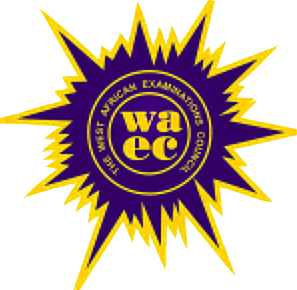
Our candidates enjoyed it very early
CHEMISTRY PRACTICALS ENJOY
Pls use ur school end points.
(1a)
Burette reading (cm)³|1st reading|2na Reading|3rd reading|
Final |15.25|30.53|45.79|
Initial |0.00|15.25|30.53|
Volume of acids used |15.25|15.28|15.26
Average volume of acid used =15.25+15.26/2
=15.255cm³
=15.26cm³
Or =15.27cm³
(1b)
Given; mass con of A =5g/500cm³ = 5g/0.5dn³
CA=10g/dm³
A is HNO3
Therefore molar mass =1+14+(16*3)=15+48=63g/mol¹
Molarity of A = gram con/molar mass
CA=10/63=0.1587mol/dm3
(1bii)
Using CAVA/CBVB =Na/NB
With reacting equation ; HNO³ + NaOH—NaNO3+H2O
nA=1 nB=1
0.1587*15.26/CB*25.00=1/1
25CB=0.1587*15.26
CB=0.1587*15.26/25
CB=0.09687mol/dm³
(1biii)
B is NaOH
Molar mass
23+16+1=40g/mol
Conc of B in g/dm³=molarity * molar mass
= 0.09687*40
=3.8748g/dm³
(1biv)
No of moles present in 250cm³ of NaOH is =molar conc * volume
=0.09687*250/1000
=0.0242moles
Mole ratio of NaOH and NaNO3 is 1;1
No; of mole of NaNO3 which reacted is 0.0242
Mass of NaNO3 formed =molar mass * no; of moles
=85*0.0242
=2.05grams
===========
(2a)
TEST: C+burning splint
OBSERVATION: Sample C burst into flame .It burns with non smoky blue flame without soot. Colorless gas that turns wet blue litmus paper faint red and turns like water milky is present.
INFERENCE: C is volatile and flammable. The gas is CO2 from combustion of saturated organic compound.
(2bi)
TEST: C + distilled water + shake
OBSERVATION: Clear or colorless solution is observed
INFERENCE: C is miscible with water
(2bii)
TEST: C + Acidified K2Cr207
OBSERVATION: Orange color of K2Cr207 solution turns pale green and eventually pale blue on cooling
INFERENCE: C is a reducing agent
(2d)
Compound belongs to the class of secondary alkanol
(3ai)
Zinc nitrate
(3aii)
2 Zn(NO 3 )2 —–>2 ZnO + 4 NO 2 + O 2
(3aiii)
It turns white when cold from it yellow colour when it was hot
(3b)
Pipette / measure 50.0cm3 of the stock solution into a 250
cm3 volumetric flask (containing some distilled water). Shake / swirl and add more distilled water until the mark is reached.
(3c)
Al2(SO4)3 – turns blue litmus red
==========
(3ai) *Zn(NO3)2* Salt E is a Zinc Nitrate
(3aii) 2Zn(NO3)2 —–> 2ZnO + 4NO2 + O2
(3aiii) When the residue is left to cool, it’s color changes to white.
(3b)
(3c) It turns blue litmus paper red.
3c(i) When exposed to light, silver chloride decomposes into gray metallic silver and chlorine. The light sensitivity of the silver chloride and other silver halides, such as silver bromide and silver iodide, forms the basis of the photographic process.
3cii
The ammonia combines with silver ions to produce a complex ion called the diamminesilver(I) ion, [Ag(NH3)2]+. This is a reversible reaction, but the complex is very stable, and the position of equilibrium lies well to the right.
3d
Pure copper(II) sulfate is white. It is also known as anhydrous copper(II) sulfate because it has no water in it. When water is present in a sample of copper(II) sulfate it turns blue. … This colour change can be used to detect the presence of water (or water vapour).
======COMPLETE
=====SOLVED BY MR ABILITY===

Leave a Reply